#soil sciences
Explore tagged Tumblr posts
Text
"Many people know about the Yellowstone wolf miracle. After wolves were reintroduced to the national park in the mid-1990s, streamside bushes that had been grazed to stubble by out-of-control elk populations started bouncing back. Streambank erosion decreased. Creatures such as songbirds that favor greenery along creeks returned. Nearby aspens flourished.
While there is debate about how much of this stemmed from the wolves shrinking the elk population and how much was a subtle shift in elk behavior, the overall change was dramatic. People were captivated by the idea that a single charismatic predator’s return could ripple through an entire ecosystem. The result was trumpeted in publications such as National Geographic.
But have you heard about the sea otters and the salt marshes? Probably not.
It turns out these sleek coastal mammals, hunted nearly to extinction for their plush pelts, can play a wolf-like role in rapidly disappearing salt marshes, according to new research. The findings highlight the transformative power of a top predator, and the potential ecosystem benefits from their return.
“It begs the question: In how many other ecosystems worldwide could the reintroduction of a former top predator yield similar benefits?” said Brian Silliman, a Duke University ecologist involved in the research.
The work focused on Elk Slough, a tidal estuary at the edge of California’s Monterey Bay. The salt marsh lining the slough’s banks has been shrinking for decades. Between 1956 and 2003, the area lost 50% of its salt marshes.
Such tidal marshes are critical to keeping shorelines from eroding into the sea, and they are in decline around the world. The damage is often blamed on a combination of human’s altering coastal water flows, rising seas and nutrient pollution that weakens the roots of marsh plants.
But in Elk Slough, a return of sea otters hinted that their earlier disappearance might have been a factor as well. As many as 300,000 sea otters once swam in the coastal waters of western North America, from Baja California north to the Aleutian Islands. But a fur trade begun by Europeans in the 1700s nearly wiped out the animals, reducing their numbers to just a few thousand by the early 1900s. Southern sea otters, which lived on the California coast, were thought to be extinct until a handful were found in the early 1900s.
In the late 1900s, conservation organizations and government agencies embarked on an effort to revive the southern sea otters, which remain protected under the Endangered Species Act. In Monterey Bay, the Monterey Bay Aquarium selected Elk Slough as a prime place to release orphaned young sea otters taken in by the aquarium.
As the otter numbers grew, the dynamics within the salt marsh changed. Between 2008 and 2018, erosion of tidal creeks in the estuary fell by around 70% as otter numbers recovered from just 11 animals to nearly 120 following a population crash tied to an intense El Niño climate cycle.
While suggestive, those results are hardly bulletproof evidence of a link between otters and erosion. Nor does it explain how that might work.
To get a more detailed picture, the researchers visited 5 small tidal creeks feeding into the main slough. At each one, they enclosed some of the marsh with fencing to keep out otters, while other spots were left open. Over three years, they monitored the diverging fates of the different patches.
The results showed that otter presence made a dramatic difference in the condition of the marsh. They also helped illuminate why this was happening. It comes down to the otters’ appetite for small burrowing crabs that live in the marsh.
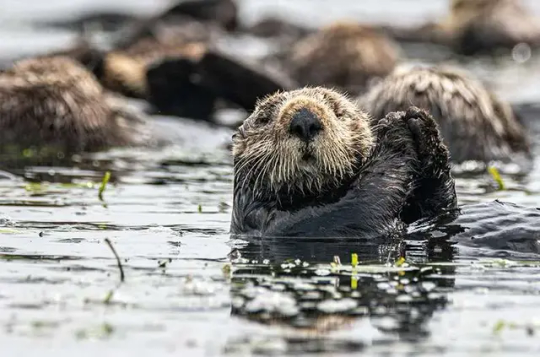
Adult otters need to eat around 25% of their body weight every day to endure the cold Pacific Ocean waters, the equivalent of 20 to 25 pounds. And crabs are one of their favorite meals. After three years, crab densities were 68% higher in fenced areas beyond the reach of otters. The number of crab burrows was also higher. At the same time, marsh grasses inside the fences fared worse, with 48% less mass of leaves and stems and 15% less root mass, a critical feature for capturing sediment that could otherwise wash away, the scientists reported in late January in Nature.
The results point to the crabs as a culprit in the decline of the marshes, as they excavate their holes and feed on the plant roots. It also shows the returning otters’ potential as a marsh savior, even in the face of rising sea levels and continued pollution. In tidal creeks with high numbers of otters, creek erosion was just 5 centimeters per year, 69% lower than in creeks with fewer otters and a far cry from earlier erosion of as much as 30 centimeters per year.
“The return of the sea otters didn’t reverse the losses, but it did slow them to a point that these systems could restabilize despite all the other pressures they are subject to,” said Brent Hughes, a biology professor at Sonoma State University and former postdoctoral researcher in Silliman’s Duke lab.
The findings raise the question of whether other coastal ecosystems might benefit from a return of top predators. The scientists note that a number of these places were once filled with such toothy creatures as bears, crocodiles, sharks, wolves, lions and dolphins. Sea otters are still largely absent along much of the West Coast.
As people wrestle to hold back the seas and revive their ailing coasts, a predator revival could offer relatively cheap and effective assistance. “It would cost millions of dollars for humans to rebuild these creek banks and restore these marshes,” Silliman said of Elk Slough. “The sea otters are stabilizing them for free in exchange for an all-you-can-eat crab feast.”"
-via Anthropocene Magazine, February 7, 2024
#otters#sea otters#conservation#erosion#coastal erosion#coastline#marshes#saltwater#marine science#marine biology#marine animals#sea creatures#ocean#sustainability#soil erosion#erosion control#crab#good news#hope
3K notes
·
View notes
Text
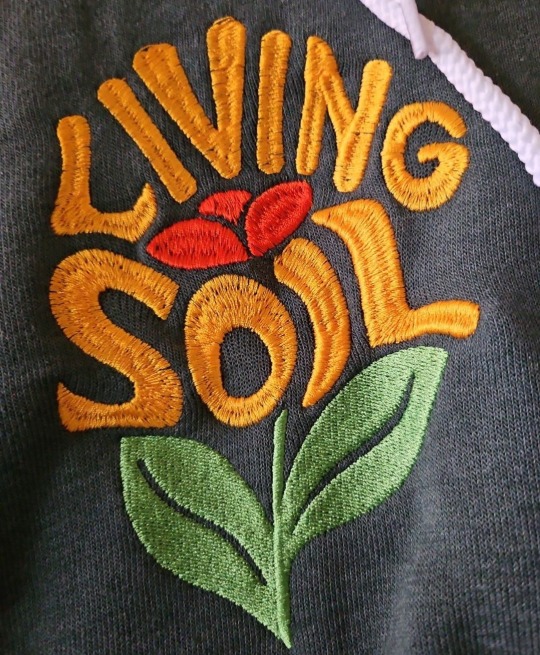

🌱✨️ "Living Soil" Embroidered Crewnecks & Hoodies ✨️🌱
Stay cozy while supporting soil health and sustainable farming 💚💛❤️
🌟 when you sign up for email offers and updates on our website, you get a chance to win up to 50% OFF your order!
🌟 FREE SHIPPING for orders over $50!!!
#soil health#soil science#soil#permaculture#environmental education#enviroment art#regenerative agriculture#regenerative farming#agriculture#sustainable living#sustainable farming#sustainability#organic life#organic matter#organic lifestyle#organic farming#organic#compost lifestyle#composting#compost#vermicompost#biodiversity#ecomindset#conservation#microbes#plant life#plant lover#street style#hippie#stoner society
562 notes
·
View notes
Note
Not even really a crossover but it could be
Danny gets outed/reveals/something and everybody knows he's Phantom. There are science organizations that are absolutely *frothing* at the mouth to hire him.
He gets hired to modify and then deploy hurricane and tornado reading equipment because he's able to fly into the center unharmed. There is much less margin or error because he's always able to get the equipment deployed if the weather is still happening.
Maybe it's a side job while he's in school for his BA or something
.
#danny phantom#bones replies#oh that’s FASCINATING#homeboy is finally able to go deep under the earth and get soil samples. do you know just how much that’d be a breakthrough?#he could get samples from sealed underground lakes#or go DEEP underwater and record wildlife#even go into shipwrecks deep underwater and search them???#everyone is scrambling to train and hire him to make insane breakthroughs in science
1K notes
·
View notes
Text
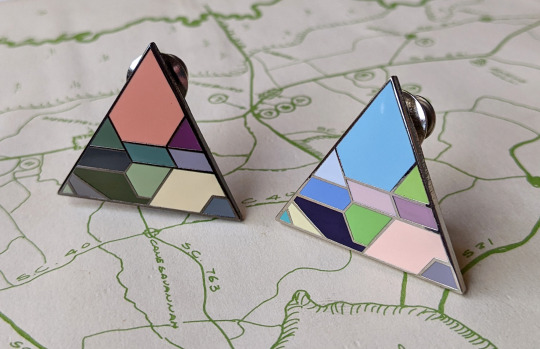


I have some new hard enamel pins available in my Etsy shop! A soils color chart and the soils pyramid! There is also a combo pack where you can pick which color triangle and soils chart you want together.
Show everyone how much you love dirt today.
2K notes
·
View notes
Text
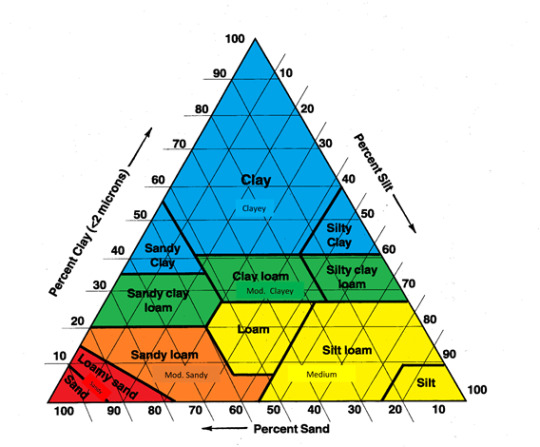
vote for one and when this poll closes we will see what we make!
2K notes
·
View notes
Text
When Stockholm’s Traffic Office conducted a general assessment of street traffic in the Swedish capital in 2001, it came to the shocking conclusion that two-thirds of all trees in the city center were dead or dying.
City authorities agreed that an urgent response was needed to nurse these leafy urban ecosystem pillars back to health.
Enter Björn Embrén, Stockholm’s first “tree officer.”
Under his leadership, various technologies and materials were tested in an attempt to create a more suitable living space for trees in the urban environment.
“I knew that they could grow if the circumstances were right,” says Embrén, a former professional gardener.
“It’s like putting a plastic bag over your head and tightening it over your neck,” says Embrén. “That’s what happened to the trees in Stockholm. They were dying.”
Eventually, inspired by railroad embankments — which require only a small amount of organic matter for healthy trees to grow — Embrén concocted what was to become known as the “Stockholm tree pit” model.
By 2002, Embrén had drawn up designs. And by 2003, they were already building.
The design involves digging a pit and constructing a frame underground around the tree’s roots, and then filling said pit with a mixture of soil and stone, sometimes including biochar, to both aerate and fertilize the soil. These permeable layers are very strong and physically adaptable but also allow stormwater to flow in, meaning the trees are provided with sufficient air and water naturally. They also allow rainwater to be soaked up — a necessity amid more extreme weather brought on by climate change.
“We found that the more breathable the materials we used, the happier the trees were,” adds Embrén.
Proponents say the method has a number of benefits, including the fact that pits can be installed around existing trees, they can bear the weight of heavy-vehicle traffic, they require little topsoil — a resource that is becoming scarce — and they need less watering than traditionally-planted trees.
This approach, which allows tree roots to thrive beneath hard surfacing, ergo allowing healthy trees to grow within the modern built environment, is particularly relevant as cities attempt to re-green and reforest in the face of climate change.
According to the United Nations Economic Commission for Europe, urban forests can help “future-proof” cities, which are responsible for about 75 percent of global CO2 emissions. Sustainable urban forestry, it says, can bring multiple benefits, such as lowering temperatures, improving public health, creating habitats for biodiversity, sequestering carbon, generating green jobs, and mitigating risks of floods and landslides.
“It’s more important now than ever before,” says Ryan Klein, an assistant professor in the Department of Environmental Horticulture at the University of Florida. “We have these massive populations in urban areas. And we’re seeing more extreme weather like hurricanes, wildfires and prolonged droughts. Trees can help to offset some of these negative effects.”
However, amid the rush to rapidly reforest cities, experts like Klein warn that due to ineffective methods and techniques being used, it’s common to see urban trees in poor health, and trees planted in cities often have very high mortality rates.
“We have the understanding of how to grow healthier, more sustainable and resilient forests,” says Klein. “The research backs it. Unfortunately, we don’t always invest the time, money or internal know-how on implementing this.”
A review of 16 scientific studies on urban tree mortality, published in 2019, found that in the first five years after planting, 6.6 to 7 percent of trees died annually.
“Urban soils are not very tree-friendly currently,” says Rik De Vreese, leader of the Urban Forestry Team at the European Forestry Institute. “It’s quite a serious threat.”
When trees aren’t properly anchored, De Vreese adds, it can also lead to other issues, such as trunks falling over and causing damage or roots warping sidewalks.
However, the Stockholm Tree Pit method — and the way that it’s been implemented in Sweden — is helping urban forests genuinely take root.
One of the first locations where Embrén introduced a tree pit was Erik Dahlbergsallén street in Stockholm, not far from the popular Swedish Museum of Natural History.
There, according to research by the municipality, the circumference of a selection of those planted trees increased from 30 to 35 centimeters to 70 to 83 centimeters between 2004 and 2013, even surpassing that of trees without the tree pits that have been there for more than 80 years. The latest figures from 2024 saw them reach between 100 and 136 centimeters.
“It’s easy to see how effective the pits have been,” says Embrén.
The municipality estimates that 2.3 million liters of rainwater are managed by the trees per year, and consequently, 4,600 square meters of roofs and sidewalks have been disconnected from the sewage system, reducing the burden on water treatment services.
This technique has proven so successful that it has become the standard for all other development projects in the public spaces of Stockholm. Embrén says he has been directly involved in constructing more than 3,000 tree pits, and while he has since retired, there are now three “tree officers” who have taken on the expanding role.
Britt-Marie Alvem, one of the current tree officers, estimates that the city now builds between 500 and 1,000 tree pits a year.
These days, the tree pits are also in almost every Swedish city — with a few variations.
“Some have copied and changed a little bit, like adding pumice to the stone mix,” says Embrén.
Stockholm’s tree pits are now spreading across Europe, too. In Budapest, Hungary’s capital, the tree pits can be found all over Bartók Béla Boulevard and Arany János Street. Embrén says the Spanish city of Madrid has implemented the method using local materials. And it’s become increasingly popular in the U.K.
Ben Rose, the principal arboricultural consultant at U.K. tree service Bosky Trees and the founder of Stockholm Tree Pits, a U.K.-based company that produces the equipment required to make tree pits, says that he has planted about 500 trees using the Stockholm model in the U.K. since he began in 2019, mostly as part of small-scale pilot projects.
“The approach is very suitable for use in urban situations, particularly in car parks, in plazas, and beside walkways or cycle paths,” says Rose.
Join the Reasons to be Cheerful community by supporting our nonprofit publication and giving what you can. JoinCancel anytime
Yet there are some drawbacks to the system. Installation costs can be high, the pits can require a large amount of space to install, and it is impossible to reuse existing soil. In addition, for now there is a relative dearth of professionals who know how to construct tree pits.
“Our main concern is the price,” says De Vreese, whose team is currently studying the importance of “structural soils” like those deployed by the tree pits. “Excavating the soil surrounding the tree and refilling it is no small job.”
And while Professor Klein praises the Stockholm Tree Pit’s use of structural soil and how effective it’s proven to be, he notes that the long-term success of urban forestry also relies on other factors such as the supply of high quality nursery stock and proactive tree management such as routine pruning by municipalities.
“If we don’t have these we are setting ourselves up for failure,” he says. “Some cities do the bare minimum. In the U.S.A., it’s the wild west. But others, like Stockholm, are proactive, and they have public officials seriously behind it. That’s what we need.”
By: Peter Yeung, March 4, 2025
#urban forests#urban trees#trees#tree pits#stockholm#good news#environmentalism#science#environment#nature#climate crisis#climate change#urban design#urban landscape#urban life#cityscape#city#street#streetscape#urban#soil health#reforestation
448 notes
·
View notes
Text
Scientists have discovered a new phylum of microbes in Earth's Critical Zone, an area of deep soil that restores water quality. Ground water, which becomes drinking water, passes through where these microbes live, and they consume the remaining pollutants. The paper, "Diversification, niche adaptation and evolution of a candidate phylum thriving in the deep Critical Zone," is published in the Proceedings of the National Academy of Sciences. Leonardo da Vinci once said, "We know more about the movement of celestial bodies than about the soil underfoot." James Tiedje, an expert in microbiology at Michigan State University, agrees with da Vinci. But he aims to change this through his work on the Critical Zone, part of the dynamic "living skin" of Earth.
Continue Reading.
163 notes
·
View notes
Text
A new study demonstrates that invasive plants don't just directly compete with native species at a direct, macro level, but the ability they have to connect with mycorrhizal partners have a negative impact on the soil microbiome into which they are introduced. It also makes the point that the relationship between a plant and its mycorrhizal partners does not occur in a vacuum, but within the wider community of plants and the various beings in the soil microbiome.
All of this may seem common sense; after all, all of nature is interconnected in some way or another. However, mycorrhizal relationships are often presented in a 1:1 ratio, with a plant and its fungal partner working together in spite of whatever else is going on around them. It should come as no surprise that environmental factors can alter that relationship, and how effectively the partners exchange nutrients. In this case in particular, the invasive plant was able to tap into the mycorrhizal network, but less efficiently than its native neighbors.
Whether it can evolve more effective connections with soil fungi in the future remains to be seen. Moreover, this was a study done in a laboratory setting with two native plants and one invasive, and may not necessarily reflect the complexity of mycorrhizal networks in nature. Still, the fact that the introduction of a non-native plant species can affect how native plants and fungi interact is one more reason to remove invasive species whenever possible.
*"Myco" means fungus and "rhizo" means root. Some soil fungi wrap their mycelium around the roots of plants, or even grow into those roots. the plants then send carbon made from sunlight through photosynthesis down to the fungi, and the fungi give the plants phosphorus and other nutrients from the soil in a mutually beneficial relationship.
#plants#fungi#mycorrhizal fungi#invasive species#invasive plants#native plants#ecology#restoration ecology#nature#botany#mycology#soil#soil science#soil health#science#scicomm#environment#conservation
133 notes
·
View notes
Note
Hi! Just found them in Itupeva, Southeast of Brazil.
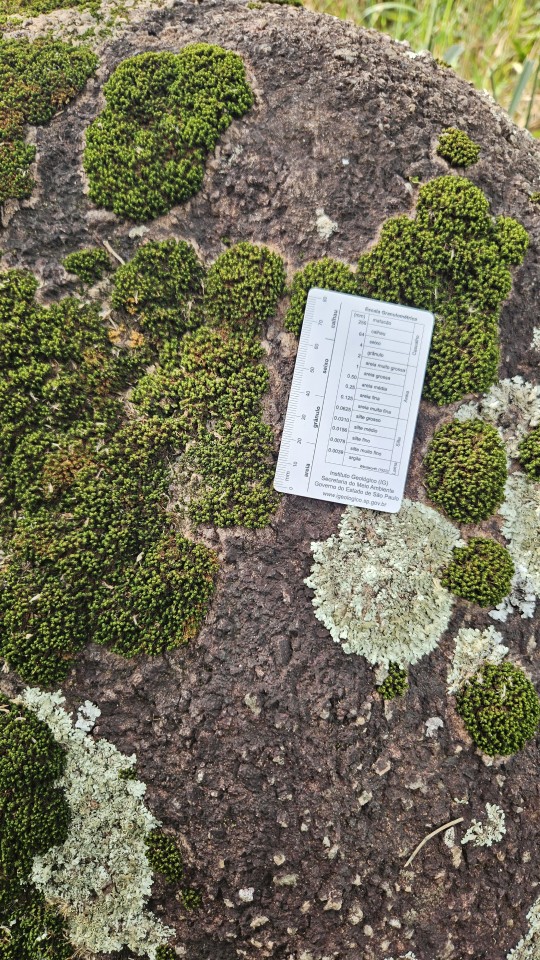

Ooooh those are some very happy looking lichens! And moss! So full and fluffy looking. I don't know enough about South American lichens to venture an ID guess, but they look like Parmeliaceae-type lichens. Also love the little soil-type scale. I wish I had learned more geology. Thanks for sharing!
#lichen#lichens#lichenology#lichenologist#Brazil#soil science#I wanted to take geology but it didn't fit into my schedule#I did take soil science and retained nearly none of it#I regret not paying more attention
59 notes
·
View notes
Text
Female crane fly (family Tipulidae) laying eggs. I knew some species lay eggs in soil, but wasn’t expecting it to look this silly 😆
While most crane fly adults don’t feed (they’re not giant mosquitoes!), most larvae eat dead plant matter. Larvae are an important part of the soil ecosystem because they convert organic matter into nutrients that plants and other life forms can use. Crane flys are also an important food source at all stages of their life for everything from spiders to song birds.
#crane fly#tipulidae#diptera#mosquito hawk#gollywhopper#beneficial insects#soil#soil science#ecology#nature#bugs#biodiversity#animals#inaturalist#arthropods#bugblr#entomology#insect appreciation#funny bugs#funny video#needs squeaking bed noises#or dorky music#leather jacket#flies are cool#flies#not all flies are bad#don’t squish bugs#biology nerd#invertebrates
151 notes
·
View notes
Text
"A surprise discovery from the University of Birmingham shows that we may be significantly underestimating the potential of trees to regulate the variables of climate change.
That’s because they found microbes living inside trees’ bark absorb the greenhouse gas methane about as significantly as microbes living in the soil.
It’s long been thought that soil is the only effective terrestrial methane sink, as certain microorganisms use methane as a food source, but similar creatures live under a tree’s layer of bark, meaning that not only do our woody cousins withdraw CO2 from the atmosphere and store it in their roots, but also remove methane as well, about as effectively or perhaps more so than soil.
Methane is a potent greenhouse gas for the few short years it exists in the atmosphere before degrading.
Professor Vincent Gauci of U. Birmingham led the study, published in the journal Nature.
In the study, the researchers investigated upland tropical, temperate, and boreal forest trees. Specifically, they took measurements spanning tropical forests in the Amazon and Panama; temperate broadleaf trees in the UK; and boreal coniferous forests in Sweden.
The methane absorption was strongest in the tropical forests, probably because microbes thrive in the warm wet conditions found there. On average the newly discovered methane absorption adds around 10% to the climate benefit that temperate and tropical trees provide.
By studying methane exchange between the atmosphere and the tree bark at multiple heights, the researchers were able to show that while at soil level the trees were likely to emit a small amount of methane, from a couple of meters up the direction of exchange switches and methane from the atmosphere is consumed.
In addition, the team used laser scanning methods to quantify the overall global forest tree bark surface area, with preliminary calculations indicating that the total global contribution of trees is between 24.6-49.9 Tg (millions of tonnes) of methane. This fills a big gap in understanding the global sources and sinks of methane.
“Tree woody surfaces add a third dimension to the way life on Earth interacts with the atmosphere, and this third dimension is teeming with life, and with surprises,” said co-author Yadvinder Malhi of the University of Oxford."
-via Good News Network, July 31, 2024
#trees#forests#tree bark#methane#global warming#emissions#plant biology#soil#microbes#microbiology#climate news#climate science#good news#hope
911 notes
·
View notes
Text

Isopods, aka roly-polies or pill bugs, - tiny crustaceans with BIG impacts
They’re detritivores, meaning they feast on dead and decaying organic matter—like fallen leaves, wood, and even fungi. 🍂🥀🪵
Here’s why they’re vital for our soil:
🌱 Nutrient Recycling: As they munch through plant material, they break it down into smaller particles, speeding up the decomposition process. This enriches the soil with vital nutrients that plants need to thrive.
🔄 Carbon Cycling: By decomposing organic material, isopods play a key role in the carbon cycle, helping store carbon in the soil and reducing carbon loss to the atmosphere.
🌍 Soil Aeration: While burrowing and feeding, isopods loosen compacted soil, improving oxygen flow and creating a healthier environment for plant roots and microorganisms.
Found on every continent except Antarctica, isopods thrive in forests, gardens, and even urban environments. 🌟 Wherever there’s organic matter to break down, these hardworking decomposers are on the job!
So next time you see an isopod, give it some love! 🤍 They’re working hard to keep our soil alive and thriving. 🌿
#soil health#soil science#soil#permaculture#isopods#pill bug#roly poly#environmental education#environmental awareness#regenerative farming#regenerative agriculture#agriculture#sustainable living#sustainable farming#sustainability#organic life#organic matter#organic lifestyle#organic farming#organic#vermicompost#composting#compost lifestyle#compost#biodiversity#conservation#ecomindset#bugs#insects#nature lovers
87 notes
·
View notes
Text
we are all a bit confused and that is okay. Happy Earth day. May real God and science and art harmony and peace and love be with all of us.
#earth day 2025#april 22#anarcho communism#science#soil science#peace on earth#stop war#geopolitics#rebellion#astrophysics#biology#psychology
21 notes
·
View notes
Text
This is not a good day at work. Not even for me, specifically, just in general. The lab equipment is causing Problems. None of them are anybody's fault, it's just Not Going Well.
#of all the equipment to have issues it's the goddamned paint shaker we use to grind soil samples#it won't stop moving when it's turned on and it carved a small hole in the wall#management is annoyed. we are all annoyed.#oh also one of the paint cans would not close right and spilled dirt everywhere#hylian rambles#hylian does science#vent post#send help it's a murphy's law kind of day
21 notes
·
View notes
Note
Can you do the lyrics to "Soil" by Cosmo Sheldrake, I think it'd be fitting
sure thing! i always find his music calming, but for some reason i doubt that the protein form will have the same effect
letter sequence in this ask matching protein-coding amino acids:
IwannagdnwardsIwannaegrndIwannafednIwannareakdwnIwannaeallgneIwannaefdIwannaewalkednIwannaesilIwannaesilIwannaesndIwannahldsecretsThatwillneverefndIwannaesilLivepsidedwntitwillnevergetlnelyWitheverynerndIwannagdwnwaardsIwannagdwnwardsIwannaegrndIwannaegrndIwannaesilIwannaesilIwannaesndtitwillneveresilentAndIwillneverefndNevernevereaqestinThatIwannagdwnThatIwannaesilThatIwannaegrnd
protein guy analysis:
i'm not mad so much as i'm confused. this is a weird looking one. disordered loops going all over the place aren't new, and there is a lot of that here. the more unusual part is the long and very curved alpha helix. there is a glycine right around where the bend is, but i still feel like that doesn't fully explain it. interestingly enough, this helix is actually the part of the structure that AlphaFold trusts most. i've simply decided to let this unnatural mess exist and not question too much of why it's like this.
predicted protein structure:

cartoon coloured by pLDDT

close up of side chains on bent helix
#science#biochemistry#biology#chemistry#stem#proteins#protein structure#science side of tumblr#protein asks#protein songs#soil#cosmo sheldrake
61 notes
·
View notes